简介
Weibao Mountain is about 10 kilometers southeast of the county, with a total area of 19.4 square kilometers and a summit elevation of 2509 meters, the mountain is majestic and imposing, running from northeast to southwest. Opened in the Han Dynasty, the mountain was the birthplace of the Nanzhao Kingdom in the Tang Dynasty.
It stretches for tens of miles, with undulating peaks, and its shape resembles a crouching lion looking down on the county. In 1992, Weibao Mountain was listed as a national forest park. The main peak of Weibao Mountain is 2509 meters, and the Taoist temple was built since the Tang Dynasty, and flourished in the Ming and Qing Dynasties, and by the end of the Qing Dynasty, the Taoist temple was all over the mountain. Therefore, Weibao Mountain is famous and known as one of the four famous Taoist mountains in Yunnan. It is also the birthplace of Nanzhao, which has left many legends and monuments to this day.
Weibao Mountain, also known as Weishan, is one of the birthplaces of the ancient Nanzhao Kingdom. Since the Kangxi period of the Qing Dynasty, from the first to the fifteenth day of the second month of the lunar calendar, the local Yi people have held a temple fair at Weibao Mountain, which is a sacred place for the Yi people to worship their ancestors. Nowadays, Weibao Mountain has lush vegetation, ancient trees, lush shade, tinkling streams, flowers and grasses, elegant environment and pleasant scenery. It is a natural oxygen bar.
The Encyclopedia of China - Religion Volume lists Weibao Mountain as one of the 13 famous Taoist mountains in China. According to historical records, Mount Weibao had Meng You (brother of Meng Huo) instructors preaching in the mountain in the Han Dynasty. In the Ming and Qing dynasties, the Taoists of Wudang Mountain in Hubei and Qingcheng Mountain in Sichuan moved to Weibao Mountain and built more than 20 Taoist temples in the mountain, such as Junti Pavilion, Ganlu Pavilion, Hall of Reward, Rushing Mountain Hall, Wenchang Palace, Lord Pavilion, Laojun Hall, Yuhuang Pavilion, Three Emperor Hall, Guanyin Hall, Kui Xing Pavilion, Sanqing Hall, Three Princess Hall, Cai Shen Hall, Qingxia Guan, Ling Gong Palace, Dou Lou Pavilion, Peihe Building, Huanzhen Building, Changchun Cave, etc. In the heyday, there were as many as Hundreds of people. The palace is located on the mountain, the layout is ingenious, the pavilion is set up, the craftsmanship is exquisite, majestic and elegant, the sculpture image is realistic and subtle, the carved murals and patterns are rich and colorful, with strong religious colors and national characteristics. The fresco "Song under the Pine" on the pier of Wenlong Pavilion in Wenchang Palace, which reflects the joyful scene of Yi people playing songs, is a precious cultural relic, a copy of which was sent to Beijing for exhibition and was highly evaluated.






